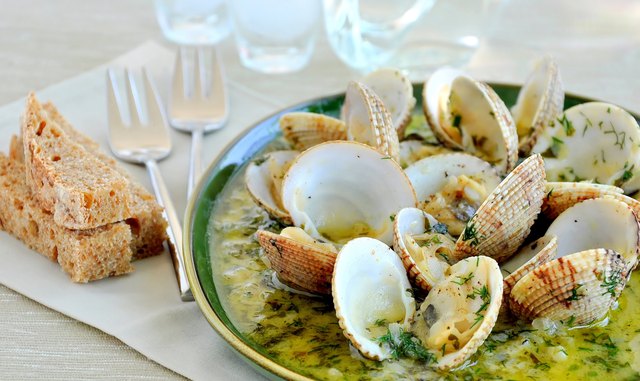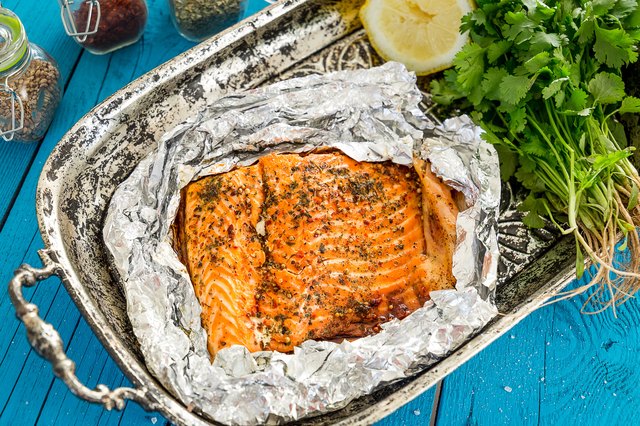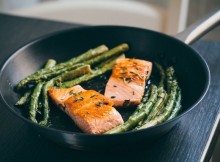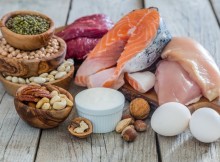9 excuses to eat more seafood (tip: can make you happy!)
Advertisements
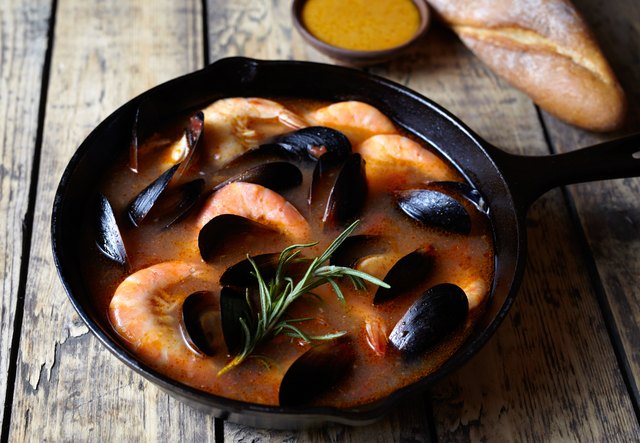
Advertisements
from seafood stew to spaghetti, there are various delicious ways to repair your seafood. When you find that you want to eat fish for the next meal, you can rest assured because you know it's good for you. " With low total calories and unsaturated fat, seafood may be one of the top foods to maximize your health, "said M.S., chief nutritionist at Halley center in Beverly Hills, California. So if you want to know what to eat for dinner, why not eat seafood? Here are nine compelling reasons to do so.
Credit: Green Art Photography / Adobe stock as part of a healthy diet, eating seafood regularly helps keep you slim. " Seafood is one of the most slimming foods. "It's incredibly low in calories," said Karen Ansel, M.M., RDN, co-author of "health rush: simple." Consider a tuna steak. A six ounce tuna steak is only 185 calories, but it can provide 41 grams of protein. When you compare it to a six ounce sirloin steak, which has 342 calories and a protein content of only 35g, fish is the winner. In fact, a study published in the European Journal of clinical nutrition ranked steamed white fish (such as flounder) as the second most satiety food, after the satiety coefficient of boiled potatoes. The researchers believe that white fish may be particularly prone to satiety due to their high protein content and effects on the hormone serotonin, which is to some extent a source of hunger signals. Seafood is the main source of omega-3 fatty acids and an important nutrient to support heart health. " Eicosapentaenoic acid (EPA) and docosahexaenoic acid (DHA) are the most efficient omega-3 compounds in human body. They are found in marine products, especially fatty fish like salmon, tuna and trout, "said Misti gueron of the Massachusetts Institute of technology, RDN. Because EPA and DHA cannot be produced effectively by human body, it is very important to obtain these nutrients from food (mainly cold water fatty fish) or high-quality omega-3 supplements. Two servings of omega-3-rich fish a week or daily supplements can help you achieve this goal. read more : Angela Davis of soulcycle shares how to kill it in spinning lessons and life. Omega-3s DHA and EPA in fatty fish also play an important role in eye health. The highest concentration of DHA in the human body is in the retina of the eye. The high concentration of DHA in the retina allows you to be in different light conditions (for example, when the room changes from dark to light, forcing your eyes to adjust immediately; this is driven by the benefits of DHA). As you get older, omega-3 also protects your eyes. " Many studies have shown that people who eat more omega-3 in their diet may have healthier vision in their later years, "said Misti gueron, MD, RDN. Credit: telecommunication / Adobe stock intake of sufficient protein is essential to maintain metabolism, blood glucose level stability and energy. The good news is that seafood is rich in protein. In fact, it is a complete protein source, containing all the necessary amino acids that can help build and repair tissues. And because seafood has less connective tissue than red meat and poultry, it's easier to digest. A typical three ounce cooked fish or shellfish meal provides about one-third of the recommended daily protein. Advertisements Credit: evgenyb / Adobe stock Credit: exclusive design / Adobe stock Credit: B. and e.dudzin Ski / Adobe stock Credit: sonyakamoz / Adobe stock Advertisements 1. It helps to lose weight
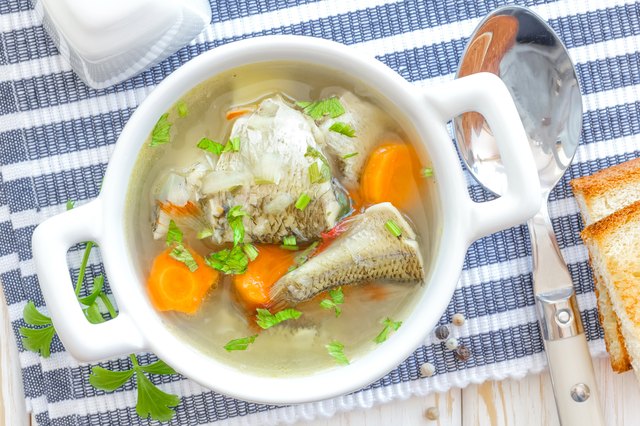
4. According to the U.S. Food and Drug Administration (FDA) and the U.S. Environmental Protection Agency (EPA), eating seafood can improve IQ, especially for pregnant women, lactating women and mothers with children. Eating fish often helps children's brain growth and even improves their IQ. The FDA study showed that when women of childbearing age ate two or three recommended servings of fish a week, their babies' IQ was estimated to increase by 2.6 points. Unfortunately, most pregnant and lactating mothers do not eat the recommended amount of seafood, in part because of concerns about mercury levels. The FDA and EPA advise women to avoid four high mercury fish: sharks, sharks, swordfish and mackerel in the Gulf of Mexico. But according to the FDA, there are safer fish to eat, including salmon, COD, tuna (light canned), tilapia, catfish and cod. It is rich in protein

6. It helps to treat depression, although more research is needed, but many studies show that people who eat more fish are less likely to suffer from depression. " Although it's not clear whether this is because people with depression have low omega-3 fat content, or because people with depression don't eat enough omega-3 fat, eating a few servings of fish a week will certainly not hurt, "said Karen Ansel of RDN medical school. In addition, vitamin B-12 also helps. " Many kinds of seafood, especially clams, mussels and crabs, contain vitamin B-12, which also helps prevent dementia and depression, "Ansel added. It can enhance immunity, not only vitamin D is essential for bone health, but recent studies have shown that it may also help protect the CT examination of the common cold. Unfortunately, if you don't spend enough time in the sun, or your body has difficulty absorbing vitamins, you may not get enough vitamins. Fatty fish is a good source of vitamin D, and wild seafood may be your best choice for sun nutrition. Researchers at Harvard University tested 24 farmed salmon and 20 wild caught salmon, and found that farmed salmon contained only about 25% of the vitamin D content of their wild caught counterparts. The researchers believe that this is because farmed salmon have low vitamin D content in their edible meat due to the lack of vitamin D in their food. Sustainable seafood is good. One third of the world's fish population is in a dangerous state of depletion, but choosing only sustainable seafood can help. Thankfully, sustainable seafood is easy to find. Unless you live in some coastal areas, you are likely to buy seafood from overseas. In fact, about 90% of the seafood in the United States is imported. To find out where your fish comes from, check out the country of origin label (cool), which is on all seafood sold in the United States. Although your seafood producing area can explain how it is cultured, it can't tell you the whole story. " Fishing or aquaculture of sustainable seafoodThe approach takes into account the long-term viability of specific fishing species and the well-being of the oceans and fishing dependent communities, "says Misti gueron, M.S., RDN. To understand the sustainability of seafood, the Monterey Bay Aquarium's seafood viewing program provides printable consumer guides for all 50 states, which are ideal for carrying around at home or while traveling. The guide helps you find seafood choices for the ocean based on region and season, and provides three categories to simplify your menu ordering: "best choice", "good alternative" and "what to avoid".
9. If cost and convenience are a challenge, canned seafood, such as canned tuna, salmon and sardines, are cheaper than fresh fish. The cans also offer a long shelf life, which makes them easy to store in your cupboard and use at your convenience. For maximum convenience, try ready to eat seasoned cans or fish bags without preparation or cooking time. " If you buy this food in a portable bag, you can enjoy a protein rich snack or lunch anywhere, "said Karen Ansel, MD, RDN.
What do you think? Do you eat the recommended amount of seafood? What's your favorite seafood and how do you like it? Share your thoughts in the comments section below!



